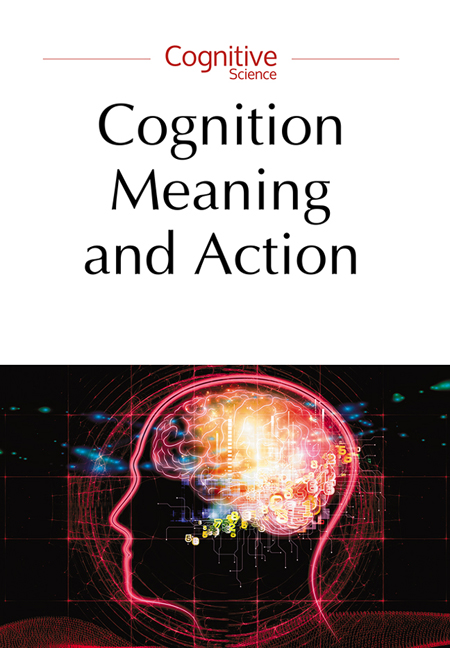Book contents
- Frontmatter
- Contents
- The crossroads of cognitive science
- Cognitive science: From computers to ant hills as models of human thought
- Two procedures expanding a linguistic competence
- Neurobiological basis for emergence of notions
- Similarity as distance: Three models for scientific conceptual knowledge
- The Approximate Numbers System and the treatment of vagueness in conceptual spaces
- Communication, cognition, and technology
- To tell and to show: The interplay of language and visualizations in communication
- Semiotics, signaling games and meaning
- Out of the box thinking
- The everyday of decision-making
- Short- and long-term social interactions from the game theoretical perspective: A cognitive approach
- Notes about Authors
Neurobiological basis for emergence of notions
Published online by Cambridge University Press: 10 January 2018
- Frontmatter
- Contents
- The crossroads of cognitive science
- Cognitive science: From computers to ant hills as models of human thought
- Two procedures expanding a linguistic competence
- Neurobiological basis for emergence of notions
- Similarity as distance: Three models for scientific conceptual knowledge
- The Approximate Numbers System and the treatment of vagueness in conceptual spaces
- Communication, cognition, and technology
- To tell and to show: The interplay of language and visualizations in communication
- Semiotics, signaling games and meaning
- Out of the box thinking
- The everyday of decision-making
- Short- and long-term social interactions from the game theoretical perspective: A cognitive approach
- Notes about Authors
Summary
Introduction
Even though psychology and logic share several topics of common interest, they operate within different paradigms and therefore encounter difficulties in mutual communication of their advances. One of the most dire problems shared by both is the question of acquisition and structure of notions. Both of these issues have been minutely addressed from perspective of logic in the previous article entitled “Two procedures expanding a linguistic competence” (Łukowski, 2015). The theory proposed there for development of linguistic competence and ontogenesis of notions, has significant impact on foundations of semantics. Its claims could not be made if not for several neuroscientific insights into functioning of the central nervous system that resulted in refining the models of cognitive processes. It is apparent that emergence of notions in an individual is a direct product of brain activity. Even though philosophers still contest the character of relationship between neural function and psychological phenomena, it is no longer controversial in science that the structure of the first determines the structure of the latter. Following that, any theory expressed in language of psychology or philosophy should comply with inferences concerning the architecture of thinking that is derived from neurophysiological data. Although there is a vast amount of information concerning neurobiological correlates of psychological phenomena some of them are of special interest in the discourse on notions and the meaning of words. This chapter will focus especially on biological substructure underlying vagueness, generality, dynamicity and temporality of notions.
Basic concepts
Every neuronal network, be it artificial or natural, requires constant flow of new inputs (information) to properly function and produce useful output. In case of the human brain inputs are provided by receptors of sensory systems. Contrary to the popular belief, humans have more than five senses. Their actual number is estimated to be around twenty, depending on adopted definition of sense. When matter of learning is raised, it is customary in philosophy to concentrate the argument around visual perception. That practice is not groundless as majority of sensory information received by human brain is visual. 10 bits of information is coded by retina each second. Considering that human cortical, sensory network is approximately convergent (Foxe, Schroeder, 2005), only a fraction of the mentioned amount of information reaches cerebral cortex. Around 104 bits/sec ultimately reaches the fourth layer of primary visual cortex (V1) (Raichle, 2010).
- Type
- Chapter
- Information
- Cognition, Meaning and ActionLodz-Lund Studies in Cognitive Science, pp. 51 - 62Publisher: Jagiellonian University PressPrint publication year: 2015



